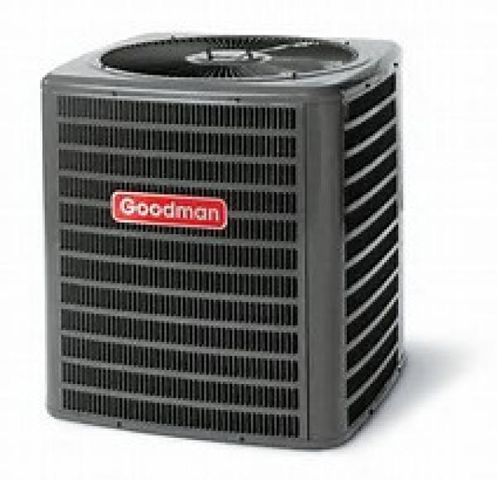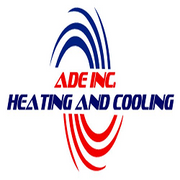New Air Conditioners VS Old Air Conditioners....Click here to learn more!!

New Air Conditioners VS Old Air Conditioners
New versus old is a comparison used in many realms. We happen to live in a time when technology is seemingly advancing faster than any one person could possibly hope to keep up with. This happens both on a short term, year by year scale, and a longer, decade by decade scale. The home technology your parents used was vastly different from what could be found in their parents homes, and so on and so on. This is no less true when it comes to home central heating and air conditioning. In fact, air conditioners nowadays have less in common with older air conditioners than perhaps many of the other appliances in your home like toasters and dryers and water heaters.
So, what exactly makes new air conditioners different from older ones and what exactly are the benefits of upgrading to a new one if you happen to have an outdated model? Well, those two questions are the primary subjects of today’s tip of the day. We’ll take a look at all the factors that separate older air conditioners (we’re talking 10 or more years old), from newer ones, from energy efficiency to integral technology and more.
Energy Efficiency
Undoubtedly, one of the factors most prominent when looking at the differences between old air conditioners and new ones is advances in energy efficiency. In fact, not only has the technology changed in this regard, the regulations and standards have as well. Twenty years ago, you could own an air conditioner with a SEER rating as low as 9. Now, the standard is 13 and above for most regions in the US.
By SEER, we’re referring to the commonly accepted, colloquial measure of energy efficiency in air conditioners, which stands for Seasonal Energy Efficiency Ratio. What does this mean for you? Well, most central air conditioning units last about 20 years. But, at 12 years old, your air conditioning unit is passing its mid-life point. Even if your air conditioner is only 10 years old, you may save 20-40 percent of your cooling energy costs by replacing it with a newer, more efficient model.
You can look at this purely from an energy consumption stand point as well. Older models sometimes used as much as 6000 watts of electricity per hour to effectively cool a single-family home. This added up quickly in regards to cost. With new technology available, and the nation’s focus on reducing energy consumption, there are now units that can cool that same house for a mere 1710 watts of energy. That full 250 percent decrease in usage will be noticeable on your energy bill immediately.
Essentially, what this means when it comes to your air conditioning is that a new air conditioner can help pay for itself versus keeping your old one if you decide to replace your old air conditioner with a newer and more efficiency model. Often the monthly operating expenses are overlooked when it comes to comparing the cost of a new HVAC unit to just repairing the old one. In many cases, the inefficiency of an older unit can cost $100 or more every month in wasted electricity. Do not fail to consider this number whenever deciding on a new air conditioning unit.
New Technology Options
Beyond just simple increases in energy efficiency and decreases in energy consumption that come with the incremental improvements in air conditioning technology, there are also a wide variety of options when it comes to HVAC systems that either didn’t exist or were not nearly as common and refined back when you’re old air conditioner was purchased.
Because air conditioning systems tend to last for more than a decade most people don’t have a need to keep up with the latest trends. But today’s available systems may be more sophisticated and efficient than the one currently in your home if it is more than 6-8 years old. If you’re looking at a replacement you should consider the following options that have grown in popularity over the last few years.
Aside from the typical central air system, another one of the popular systems that is catching on across the country is a heat pump which can work as an air conditioner in the summer and can the run in reverse and act as a heater in the winter. These systems are popular in areas where electricity costs and availability provide better economics than burning gas, propane or fuel oil.
Ductless mini-split air conditioners are also gaining in popularity for certain applications. Rather than moving cool air around your house as part of a central system they condition one room at a time. These are usually mounted on a wall or ceiling and are ideal for a room addition or to add cooling to a garage.
In addition, there are technology advancements that make it hard to beat new air conditioners, even if you get the conventional central type, when it comes to power, comfort, and efficiency. Some of the most efficient air conditioners use modulation technology. These air conditioners reach staggering levels of efficiency, maintain more even temperatures and save you money on monthly utility expenses. However, you don’t have to invest in a modulating system to enjoy high-efficiency performance. Many models operate in more than one stage of operation. This also improves energy-efficiency and increases home comfort.
Also, air quality is another realm where new air conditioners win out. Newer systems do a better job of controlling temperature and humidity, which reduces mold and mildew growth, improving both comfort and air quality in your home.
Refrigerant Changes
Another important aspect of air conditioning that has undergone change over the past decade is regulations in the realm of refrigerants. Refrigerant is the substance that allows the air conditioner to change the temperature of the air and it is integral to the process. It also has a bad rap for contributing to negative environmental effects, which is why the old refrigerant type that you’re older unit probably uses is being phased out.
The type of refrigerant used in heating and cooling systems has changed over the years. Today, the industry standard is R-410A refrigerant whereas your older system may use R-22.As we get further and further away from the phase-out date, this refrigerant is going to become more and more expensive as supply dwindles. Meaning if your older unit needs refrigerant replacement that is going to be increasingly harder to do.
At least once a week, you can hear one scientist or another warn about the current state of the Earth's ozone layer. Old coolants did nothing to help stave off problems. A new refrigerant, known generically as R410A, does not contain the ozone-eating chlorine of old refrigerants. You not only save money, you help save the environment.
And it isn’t just a matter of environmental awareness. This newer form of refrigerant works better too. Because R-410A can absorb and release more heat than R-22, your air conditioning compressor can run cooler, reducing the risk of compressor burnout due to overheating. R-410A also functions at a higher pressure than R-22, so new compressors are built to withstand greater stresses, reducing the chance for cracking. If you were to put R-410A refrigerant into a system designed for R-22, the pressure would be too much and the unit would break.
Everything Else
Those are the main things that newer air conditioners have over older units, but that’s far from all.
For example, you may have noticed that your old air conditioner tends to make quite a bit of noise. Well, today's models can reduce noise level by as much as twenty percent. New compressor technology is much quieter. Further reducing the noise level is the shape of fan blades. They now rotate so quietly you may wonder if they are working at all. And, newer units are often smaller, more visually pleasing and less expensive to purchase. This might make them blend in with your housing decor so well that, coupled with their quieter operation, they will become nearly invisible.
Another big factor is how often maintenance and repair will be needed. An older air conditioning unit, especially one that is more than 15 years old, needs to be serviced four times per year rather than the usual two for newer units. This can cost upwards of $200 per year. And that’s just for the standard service call with no repairs. This amount can easily double or triple with even the smallest of repairs. For example, the replacement of a faulty condenser fan routinely runs around $400 or $500. Plus, newer units come with a warranty, which helps you save on repair costs should any issues arise.
In addition to energy savings that add up over the lifetime of your new system, available tax credits and incentives could save you up to 30% of the cost of newer, high-efficiency systems. Look for the ENERGY STAR label for your best options when considering repair vs. replacement.
Whether you are in need of an air conditioner repair or replacement call ADE Heating and Cooling at 609-693-6050 for all of your HVAC needs!!
About the Business
Have a question? Ask the experts!
Send your question

